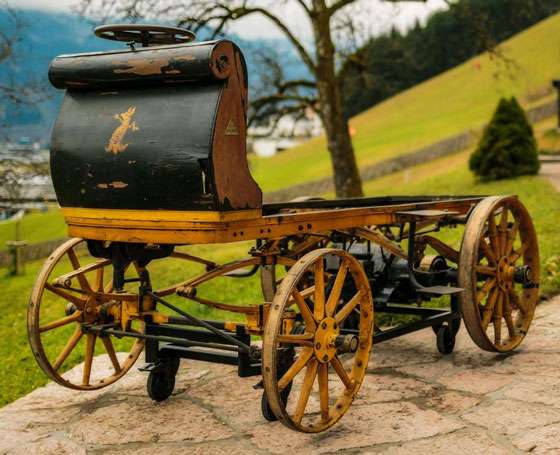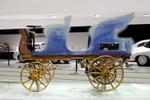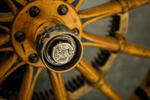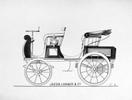
O carro tem propulsão elétrica, o motor produz 5 CV de potência e a autonomia é de 80 km. O veículo pode alcançar 35 km/h de velocidade máxima. Ferdinand Porsche usou este carro em um rali em 1899. Mais da metade dos competidores não conseguiram chegar ao final da competição, mas o Porsche P1 foi o vencedor, 18 minutos à frente do segundo colocado.
O Egger-Lohner Eletric Vehicle C.2 Phaeton Model ficou mais conhecido pelo nome "Porsche P1" porque Ferdinand escreveu a sigla "P1" nas principais peças do carro.
World premiere on the fifth anniversary of the Porsche Museum
The world’s very first Porsche design – the return of the “P1”
Stuttgart. Since the construction of the first sportscar to bear the Porsche name – the Type 356 from 1948 – Dr. Ing. h.c. F. Porsche AG has been regarded as the world's leading sportscar manufacturer. Yet the company’s history dates back to a much earlier period: In 1898, Ferdinand Porsche presented the “Egger-Lohner electric vehicle, C.2 Phaeton model” (known as the “P1” for short) – the world’s first Porsche design. After 116 years, the original and unrestored vehicle has been recovered and is set to enrich the Porsche Museum's collection as a technical and historical worldwide sensation.
Five years since it opened in January 2009, the addition of this design sees the Porsche Museum reorient its permanent exhibition. Alongside a restructuring of the layout for the area dedicated to product and motorsport history, the “P1” now forms a centrepiece used to introduce visitors to the first part of the exhibition – the “prologue”. The innovative vehicle concept of the “P1” will bridge the gap between the past and present-day developments such as the Porsche 918 Spyder. As a technological benchmark, the 918 Spyder follows a long tradition that first started 116 years ago with the “P1”.
The “P1” – designed and built by Ferdinand Porsche – was one of the first vehicles registered in Austria, and took to the streets of Vienna on June 26, 1898. Porsche engraved the code “P1” (standing for Porsche, number 1) onto all of the key components, thus giving the electric vehicle its unofficial name. The sheer volume of ideas realised within this vehicle remains remarkable even today. The highly compact electric drive, weighing just 130 kg, offered an output of 3 hp. For short periods, up to 5 hp could be achieved in overloading mode, allowing the P1 to reach up to 35 km/h. When driven in this manner, the vehicle speed was regulated via a 12-speed controller. The overall range of the vehicle could span up to 80 kilometres, a considerable feat for a vehicle of that period. A further innovation was the Lohner alternating vehicle body, which allowed the vehicle to be used in both summer and winter.
On Friday, January 31, 2014, Dr. Wolfgang Porsche, Chairman of the Supervisory Board of Dr. Ing. h.c. F. Porsche AG, Stuttgart, and Matthias Müller, President and CEO of Porsche AG, will unveil the “P1” before an audience of invited guests. The following weekend, on February 1 and 2, the “P1” can be viewed free of charge as part of the celebrations to mark the fifth anniversary of the Porsche Museum.
Technical Data "Egger-Lohner C.2 electric vehicle"
Model year: 1898
Wheelbase: 1600 mm
Gross weight: 2,977 lbs.
Battery weight: 1,103 lbs.
Motor weight: 287 lbs.
Units: approximately four units built
Octagon electric motor with differential gear
Motor shaft pinion (phosphor bronze) engages with the system of gears rings on internally toothed wheel hubs (cast steel)
Continuous power of 3 hp; can be overloaded to 5 hp (40–80 volts)
"Tudor system" 44-cell accumulator battery; 120 amp hours
Stub axle front wheel steering
Rear wheel drive with differential gear (with a transmission ratio of 1:6.5)
Mechanical band brake and electrical short circuit brake
Wooden wheels with pneumatic tires
Cruise control: 12-speed controller
Top speed: 21 mph
Travelling speed: 15 mph
Driving time: 3–5 hours
Range: approx. 49 miles






Postar um comentário